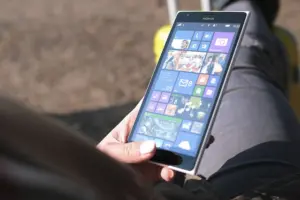Your cart is currently empty!
-
Scientific Study of Organisms in The Ocean

Marine biology is the scientific study of organisms in the ocean or other marine bodies of water. Given that in biology many phyla, families and genera have some species that live in the sea and others that live on land, marine biology classifies species based on the environment rather than on taxonomy. Marine biology differs from marine ecology as marine ecology is focused on how organisms interact with each other and the environment, while biology is the study of the organisms themselves.
A large proportion of all life on Earth lives in the ocean. Exactly how large the proportion is unknown, since many ocean species are still to be discovered. The ocean is a complex three-dimensional world covering approximately 71% of the Earth’s surface. The habitats studied in marine biology include everything from the tiny layers of surface water in which organisms and abiotic items may be trapped in surface tension between the ocean and atmosphere, to the depths of the oceanic trenches, sometimes 10,000 meters or more beneath the surface of the ocean.
Specific habitats include coral reefs, kelp forests, seagrass meadows, the surrounds of seamounts and thermal vents, tidepools, muddy, sandy and rocky bottoms, and the open ocean (pelagic) zone, where solid objects are rare and the surface of the water is the only visible boundary. The organisms studied range from microscopic phytoplankton and zooplankton to huge cetaceans (whales) 30 meters (98 feet) in length.
“The water was tripping over itself, splashing and hypnotizing, and I tried to fix my mind on a chunk of it, like each little ripple was a life that began far away in a high mountain source and had traveled miles pushing forward until it arrived at this spot before my eyes, and now without hesitation that water-life was hurling itself over the cliff. I wanted my body in all that swiftness; I wanted to feel the slip and pull of the currents and be dashed and pummeled on the rocks below . . .”
— Justin Torres (We the Animals)
Marine life is a vast resource, providing food, medicine, and raw materials, in addition to helping to support recreation and tourism all over the world. At a fundamental level, marine life helps determine the very nature of our planet. Marine organisms contribute significantly to the oxygen cycle, and are involved in the regulation of the Earth’s climate. Shorelines are in part shaped and protected by marine life, and some marine organisms even help create new land.
Many species are economically important to humans, including both finfish and shellfish. It is also becoming understood that the well-being of marine organisms and other organisms are linked in fundamental ways. The human body of knowledge regarding the relationship between life in the sea and important cycles is rapidly growing, with new discoveries being made nearly every day. These cycles include those of matter (such as the carbon cycle) and of air (such as Earth’s respiration, and movement of energy through ecosystems including the ocean). Large areas beneath the ocean surface still remain effectively unexplored.
Early instances of the study of marine biology trace back to Aristotle (384–322 BC) who made several contributions which laid the foundation for many future discoveries and were the first big step in the early exploration period of the ocean and marine life. In 1768, Samuel Gottlieb Gmelin published the Historia Fucorum, the first work dedicated to marine algae and the first book on marine biology to use the then new binomial nomenclature of Linnaeus. It included elaborate illustrations of seaweed and marine algae on folded leaves.The British naturalist Edward Forbes (1815–1854) is generally regarded as the founder of the science of marine biology.[9] The pace of oceanographic and marine biology studies quickly accelerated during the course of the 19th century. -
Solo Travel Around the World

The origin of the word “travel” is most likely lost to history. The term “travel” may originate from the Old French word travail. According to the Merriam Webster dictionary, the first known use of the word travel was in the 14th century. In English we still occasionally use the words travail and travails, which mean struggle. According to Simon Winchester in his book The Best Travelers’ Tales, the words travel and travail both share an even more ancient root: a Roman instrument of torture called the tripalium.
Today, travel may or may not be much easier depending upon the destination you choose (i.e., Mt. Everest, the Amazon rainforest), how you plan to get there (tour bus, cruise ship, or oxcart), and whether or not you decide to “rough it (see extreme tourism and adventure travel). “There’s a big difference between simply being a tourist and being a true world traveler,” notes travel writer Michael Kasum. This is, however, a contested distinction as academic work on the cultures and sociology of travel has noted.
Wherever you go, go with all your heart.
Confucius

Authorities emphasize the importance of taking precautions to ensure travel safety. When traveling abroad, the odds favor a safe and incident-free trip, however, travelers can be subject to difficulties, crime and violence. Some safety considerations include being aware of one’s surroundings, avoiding being the target of a crime, leaving copies of one’s passport and itinerary information with trusted people, obtaining medical insurance valid in the country being visited and registering with one’s national embassy when arriving in a foreign country. Many countries do not recognize drivers’ licenses from other countries; however most countries accept international driving permits.
Automobile insurance policies issued in one’s own country are often invalid in foreign countries, and it is often a requirement to obtain temporary auto insurance valid in the country being visited. It is also advisable to become oriented with the driving-rules and -regulations of destination countries. Wearing a seat belt is highly advisable for safety reasons; many countries have penalties for violating seatbelt laws.
The origin of the word “travel” is most likely lost to history. The term “travel” may originate from the Old French word travail. According to the Merriam Webster dictionary, the first known use of the word travel was in the 14th century. It also states that the word comes from Middle English travailen, travelen (which means to torment, labor, strive, journey) and earlier from Old French travailler (which means to work strenuously, toil). In English we still occasionally use the words travail and travails, which mean struggle.According to Simon Winchester in his book The Best Travelers’ Tales (2004), the words travel and travail both share an even more ancient root: a Roman instrument of torture called the tripalium (in Latin it means “three stakes”, as in to impale). This link reflects the extreme difficulty of travel in ancient times. Also note the torturous connotation of the word “travailler.”
Today, travel may or may not be much easier depending upon the destination you choose (i.e., Mt. Everest, the Amazon rainforest), how you plan to get there (tour bus, cruise ship, or oxcart), and whether or not you decide to “rough it (see extreme tourism and adventure travel). “There’s a big difference between simply being a tourist and being a true world traveler,” notes travel writer Michael Kasum. This is, however, a contested distinction as academic work on the cultures and sociology of travel has noted.
-
Global Increase in the Sales of Tablet

A tablet computer, commonly shortened to tablet, is a thin, flat mobile computer with a touchscreen display, which in 2016 is usually color, processing circuitry, and a rechargeable battery in a single device. Tablets often come equipped with sensors, including digital cameras, a microphone, and an accelerometer. The touchscreen display uses the recognition of finger or stylus gestures to replace the mouse, trackpad and keyboard used in laptops. They usually feature on-screen, pop-up virtual keyboards for typing and inputting commands.
Tablets may have physical buttons for basic features such as speaker volume and power, and ports for plugging in network communications, headphones and battery charging. Tablets are typically larger than smartphones or personal digital assistants with screens 7 inches (18 cm) or larger, measured diagonally. Tablets have Wi-Fi capability built in so that users can connect to the Internet and can have cellular network capabilities.
Tablets can be classified according to the presence and physical appearance of keyboards. Slates and booklets do not have a physical keyboard and text input and other input is usually entered through the use of a virtual keyboard shown on a touchscreen-enabled display. Hybrids, convertibles and 2-in-1s do have physical keyboards (although these are usually concealable or detachable), yet they typically also make use of virtual keyboards. Most tablets can use separate keyboards connected using Bluetooth.
I really like using my Samsung (005930:KS) tablet. I previously used the Motorola Xoom for a while and liked that.
Larry Page

The format was conceptualized in the mid-20th century (Stanley Kubrick depicted fictional tablets in the 1968 film 2001: A Space Odyssey) and prototyped and developed in the last two decades of that century. In April 2010, the iPad was released, which was the first mass-market tablet with finger-friendly multi-touch and a dedicated operating system. In the 2010s, tablets rapidly rose in popularity and ubiquity and became a large product category used for both personal and workplace applications.
The tablet computer and its associated operating system began with the development of pen computing. Electrical devices with data input and output on a flat information display existed as early as 1888 with the telautograph,[8] which used a sheet of paper as display and a pen attached to electromechanical actuators. Throughout the 20th century devices with these characteristics have been imagined and created whether as blueprints, prototypes, or commercial products. In addition to many academic and research systems, several companies released commercial products in the 1980s, with various input/output types tried out:









